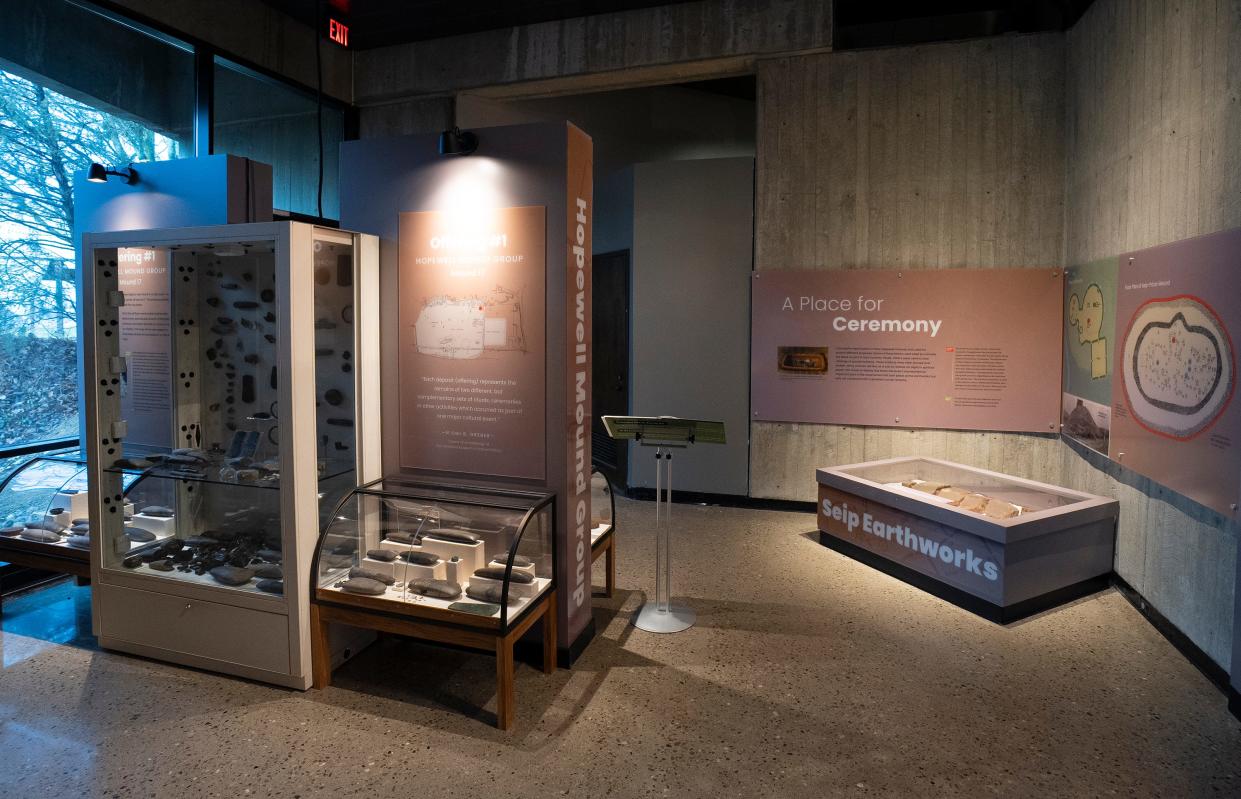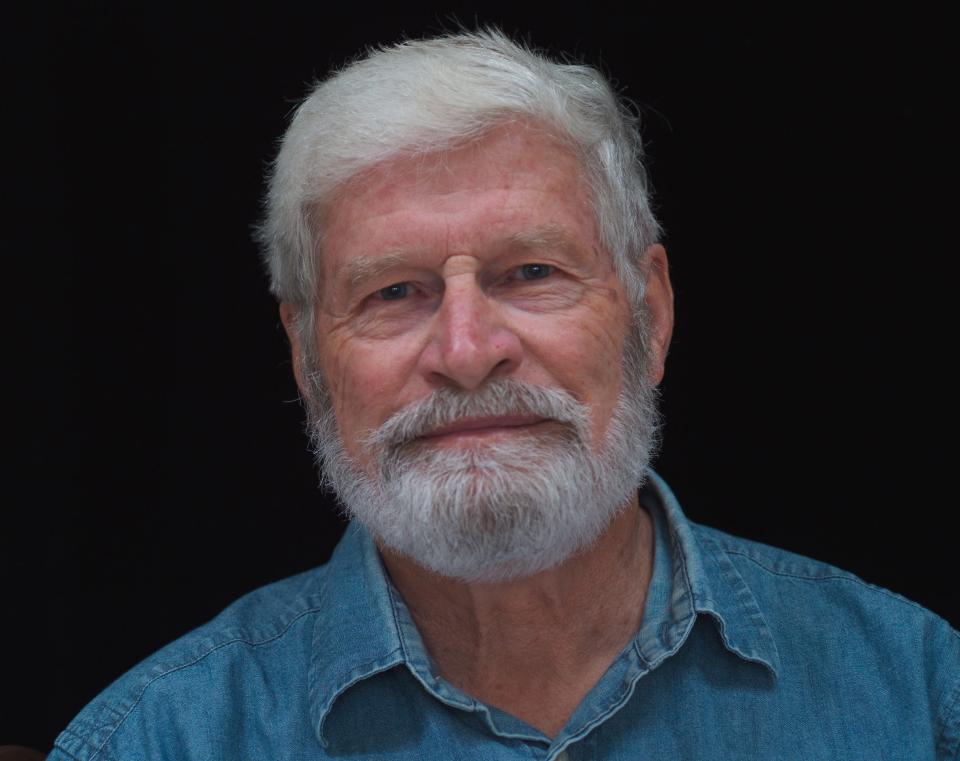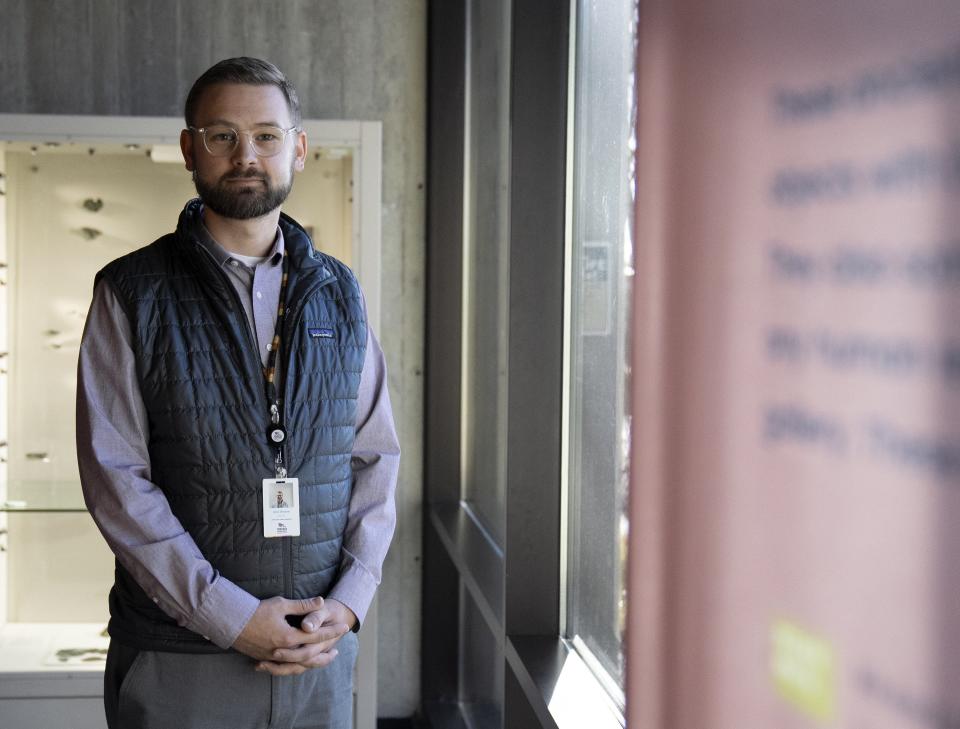World’s greatest Mound-Builder artifacts belong to Ohioans, must not be buried| Opinion

Former Circleville resident Jerrel C. Anderson is a longtime researcher on the archaeology of the Midwest and is a member of multiple archaeological societies in Ohio and West Virginia.
At the Ohio History Connection, the foxes are in the henhouse and the hens think them friends.
I recently visited the Ohio History Center to view the magnificent Native American artifact exhibits there, including the world’s greatest collection of Mound-Builder artifacts, only to find the entire exhibit gone.
More: Republican debate tonight: Could Vivek Ramaswamy be America's new president?
More: Newark Earthworks joins World Heritage sites that includes the Taj Mahal and Stonehenge
The Ohio History Connection is working with tribal activists from eight tribes, who were present in Ohio at the time of contact, and it seems they have been given complete control over the prehistoric artifact collections.

They do not want artifacts found in burial contexts to be exhibited, with their ultimate aim being repatriation of these artifacts by burying them somewhere in Ohio.
And to expedite it, the Ohio History Connection has hired several tribal members to oversee the repatriations.
The Ohio History Connection has the duty to protect, preserve, and display these artifacts, but they are now woefully negligent in these regards.
More: The Ohio History Connection has over 7,100 Native American remains. Will they be returned?
There has been nothing published in the Ohio History Connection’s newsletter, “Echoes," on the extremely drastic action of eliminating the prehistoric Native American artifact exhibits.
Prehistoric artifacts being removed
In other words, many in the membership and the public have not been made aware of it, and the Ohio History Connection seems to be trying to hide their repatriation plan until it is too late to be stopped.
For over 100 years, those collections were the core of the museum’s displays.
The Native American Graves Protection and Repatriation Act of 1990 requires the establishment, before repatriation, of direct lineal descent to human remains and associated artifacts. It was meant to rightly satisfy tribes where relatively recently excavated remains and associated burial items are involved.
But in the Ohio History Connection case, all artifacts have been removed from display, and most were from prehistoric contexts where no lineal or tribal descent can be ascertained.
Archaeology: Saga of giant Mound Builders is a tall tale that won’t go away
The Ohio History Connection has no obligation to repatriate them. In fact, many of the prehistoric artifacts are not even from burial contexts.
Artifacts belong to the people of Ohio

The Ohio History Connection is not the sole owner of the artifacts. The people of Ohio are the owners, and any disposition of them must be approved by the state General Assembly, and not solely by the Connection and/or tribes.
The first white settlers in Ohio were astounded by the many mounds and earthworks here. They asked tribes who made them; they did not know.
The tribes that existed then had no connection to the mounds and earthworks. The Mound-Builder era ended around 1,600 years before, and their earthworks remained unused since then.
From 1885 until 1954, the Ohio History Connection was known as the Ohio Archaeological and Historical Society. Under the society's auspices most of the large mounds in Ohio were excavated in an effort to understand the mound-building culture.
Stunningly beautiful artifacts were uncovered, and people came from far and wide to view them.
Burying the Ohio History Connection’s prehistoric artifacts would be a short-sighted action by the state's designated historic preservation guardian and the tribes.
The Mound Builders achieved the pinnacle of eastern North American, Native American artistic expression, and this has to be a great source of pride to the tribes of today. Why bury these fabulous artifacts?
Ohio has just received the United Nations Educational, Scientific and Cultural Organization (UNESCO) World Heritage Sites status for the state's great Hopewell Ceremonial Earthworks, which included the Newark Earthworks.
People will come from all over the world to see these earthworks and will want to see the magnificent artifacts that were associated with them. But, if they are buried, there will be none to display. Who will want to visit the Ohio History Connection museum in Columbus?
If the present trend continues, the foxes will be gone and will have struck a coup of unimaginable success. And the hens will be in their ransacked house, plucked clean and wondering whatever happened.
Former Circleville resident Jerrel C. Anderson is a long-time researcher on the archaeology of the Midwest and is a member of multiple archaeological societies in Ohio and West Virginia.
Editor's note: The Ohio History Connection replaced its "Following in our Antient Footprints" exhibit with the current exhibition "Indigenous Wonders of Our World—The Hopewell Ceremonial Earthwork" in 2022. Alex Wesaw, director of Ohio History Connection's' American Indian relations, said the connection will work with its tribal partners to determine which of the items from "Following in our Antient Footprints" will be repatriated under the Native American Graves Protection and Repatriation Act. He said he did not know how many artifacts were in the exhibit, which had been on display about 30 years.
This article originally appeared on The Columbus Dispatch: Short-sighted museum must not bury some of Ohio's oldest artifacts
